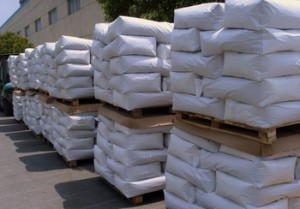Influence of HPMC Viscosity and Fineness on Mortar Performance
Viscosity and fineness are important indicators that affect the performance of Hydroxypropyl Methyl Cellulose. Studies have shown that the water-holding effects of Hydroxypropyl Methyl Cellulose will increase with the increase of its viscosity, but when the viscosity is more than 40000 MPa·s, the increase of water-holding capacity, with the increase of viscosity, will be limited The higher the viscosity is, the larger the molecular weight of Hydroxypropyl Methyl Cellulose will be, and solubility will be reduced accordingly. This may slightly improve the water-holding capacity, but at the same time will have a negative impact on strength and workability. Everything taken into consideration, in the cement mortar, the use of cellulose ether with the viscosity of 40000 MPa·s is more appropriate.
As Hydroxypropyl Methyl Cellulose particles gradually become fine, the water-holding capacity will also be improved. Fineness will affect the solubility of Hydroxypropyl Methyl Cellulose. Coarser Hydroxypropyl Methyl Cellulose is dissolved in water very slowly, and not suitable to be used in the dry mix mortar (some domestic products are flocculent, and they are not only difficult to dissolve and disperse in water, but even produce caking). In dry-mixed mortar, Hydroxypropyl Methyl Cellulose disperses among the cementitious materials such as aggregate, knifing fillers and cement Only fine enough powder can avoid caking occurring in its mixing process with water.
However, if caking occurs after Hydroxypropyl Methyl Cellulose has dissolved in water, then it is very difficult to disperse and dissolve again. Coarser Hydroxypropyl Methyl Cellulose in grain size not only is a waste, but also will reduce the local strength of mortar. In the construction of large area, such dry mix mortar may show a significant decrease in the curing rate of local mortar and will appear cracking due to uneven hydration of cementitious materials. The injection mortar for the mechanical construction has higher requirements on the Hydroxypropyl Methyl Cellulose fineness, for the stirring time is short. Therefore, after comprehensive consideration, the particle size of the cellulose ether used in the cement mortar should be less than 80μm.
Thus,Hydroxypropyl Methyl Cellulose is an efficient water retention agent for dry-mixed mortar. It helps to reduce the bleeding rate and stratification degree of mortar, but to improve the cohesion and sag resistance of mortar. Although Hydroxypropyl Methyl Cellulose may slightly reduce flexural strength and compressive strength of mortar, it can significantly improve the tensile strength and adhesive strength of mortar. In the dry-mixed mortar, the suitable addition amount of Hydroxypropyl Methyl Cellulose is 0.1%~0.3%.
In addition, Hydroxypropyl Methyl Cellulose can effectively inhibit the formation of plastic cracks of the mortar and reduce plastic shrinkage cracking index of mortar. The water-holding capacity of mortar will increase with the increase of Hydroxypropyl Methyl Cellulose viscosity, but when the viscosity is more than 40000MPa·s, the water-holding capacity will no longer significantly increase. The fineness of Hydroxypropyl Methyl Cellulose also has an impact on the water-holding capacity of mortar. When particles are relatively fine, the water retention of mortar will get improved. The particle size of Hydroxypropyl Methyl Cellulose commonly used in the cement mortar should be less than 80μm.

